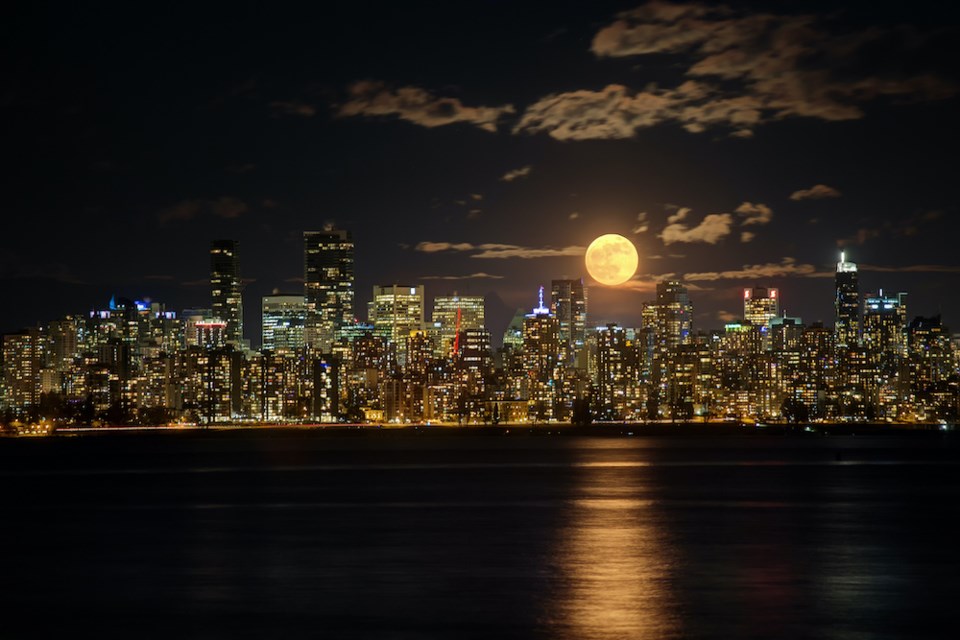A full "buck" moon will illuminate Metro Vancouver after the first week of July this year.
The moon will be at its fullest on July 10 at 1:36 p.m., according to timeanddate.com, although it will appear nearly full in the days leading up to and after.
This year's full moon will occur 11 days ahead of when 2024's did in July. Last year, the full moon coincided with the year's first official heat wave, with daytime highs reaching the low 30s.
Locals have already faced some unseasonably warm weather this year, with temperatures climbing to 31 C in Abbotsford on June 8. The long-term Metro Vancouver weather forecast indicates above-average temperatures for July, meaning this year's full moon may also occur on a warmer night.
Why is it called a full "buck" moon?
Named after the time of year when young bucks start growing new antlers from their foreheads, the July full moon "marks a time of renewal," according to the Old Farmer's Almanac. But it has also been known by several other names, including the "Thunder Moon," due to the abundant thunderstorms during this month.
The Almanac notes that Indigenous peoples would give distinctive names to each recurring full moon to mark the change of seasons. Some of the names, translated directly into English, mean the "Ripe Corn Moon” by the Cherokee, "Middle of Summer Moon" by the Ponca, and “Moon When Limbs of Trees Are Broken by Fruit” by the Zuni.
While July's full moon won't appear larger than normal, locals can observe several "supermoons" — full moons that appear larger and brighter than normal — in several months, including August, September, October and November.
Stay up-to-date with hyperlocal forecasts across 50 neighbourhoods in the Lower Mainland with V.I.A.'s Weatherhood.



